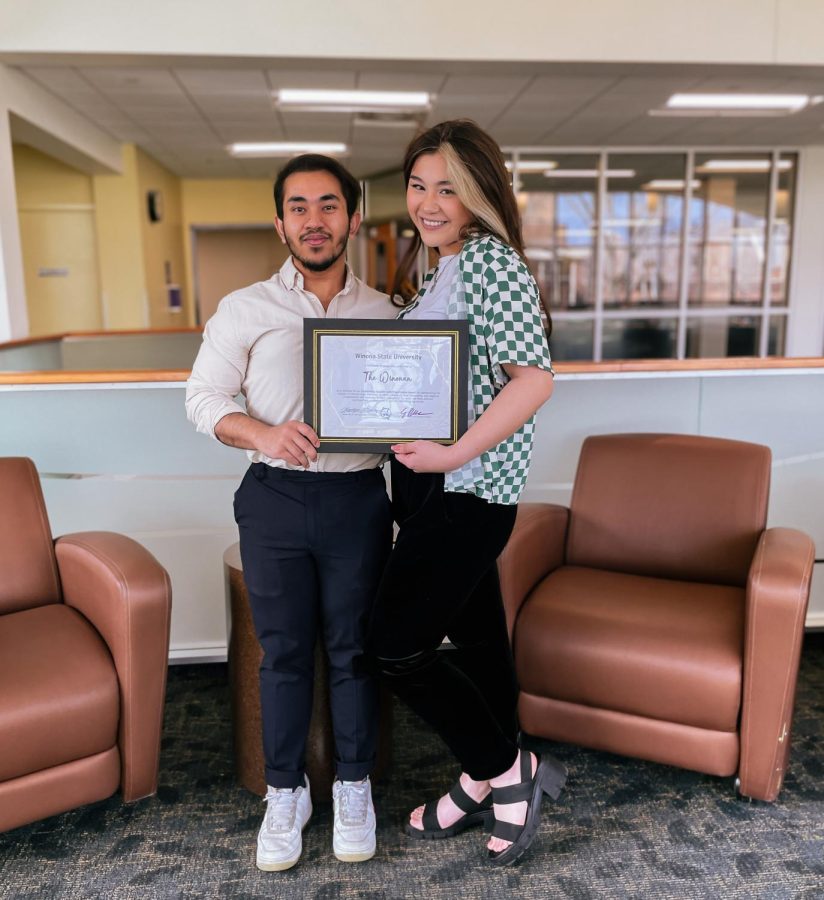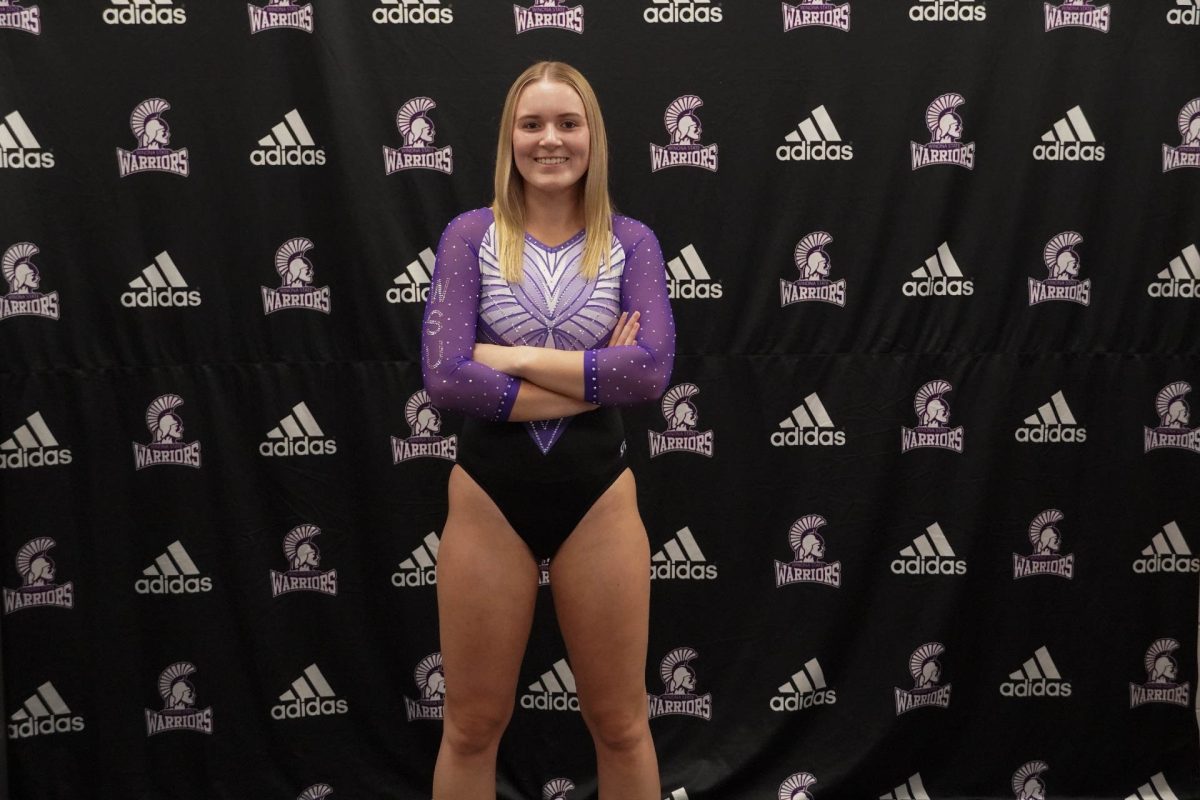Sam Thiel/Winonan
As a sports journalist, one of the most common phrases you are told is to get as much experience as you can.
After notching a couple of summer internships at local newspapers my freshman and sophomore year, I decided to gain experience in another way: attend the Associated Collegiate Press Summer Workshop.
The ACP Summer Workshop is a four-day workshop in July held on the University of Minnesota-Twin Cities campus. It was the first workshop I would attend, so I didn’t know what to expect.
I arrived at the U of M on the morning of the first day and met the group of sports writers as well as my leaders that I would be interacting with for the next four days. There were about seven writers total in our group, which was nice to have a small class size for once.
Upon introducing ourselves, I learned not only was I the lone Minnesotan but also some of the group had traveled a great distance for the conference, with one coming from Arizona and another two hailing from Sacramento, Calif.
The second day of the conference will be a day that I will never forget. Our group spent the entire day with the Minnesota Twins, and being the diehard Twins fan that I am, my mind couldn’t stop racing from excitement.
We arrived at the stadium and were quickly given a tour of Target Field by the curator of the team. His knowledge of the team and the game was astonishing and seeing some of the artifacts was a trip down memory lane for me.
After the tour, our group met with Dustin Morse, who is the Director of Baseball Communications and Player Relations with the Twins. He talked with us about his journey from his days interning at the Hall of Fame and other Major League teams and what he does for a living and his role on the team.
Also, I should note our job was to write a non-game story, a game story and what is called a sidebar, which is basically a mini-story within a story. So at about 3:30 p.m., we were allowed to go wherever we wanted in the stadium and get what we needed for our non-game/sidebar stories.
Thanks to our press credentials, we had access to the field during batting practice, which was amazing watching the players launch 500-foot home runs into the empty bleachers. But what was even more amazing, and more intimidating, was being able to go into the Twins clubhouse into the locker room and interview the players.
When we first entered through the sacred wooden doors of the clubhouse into the locker room and seeing the players surrounding us, our group clustered together like a pack of meerkats, unsure of what to do next.
I have lived in Minnesota for 18 of my 21 years on Earth, and standing roughly 5-10 feet away from my childhood idols in Joe Mauer and Torii Hunter is something I will treasure forever.
But after we gained the necessary confidence to move our legs and approach a player it was not as intimidating.
For my non-game story, I decided to write about Miguel Sanó, a rookie for the Twins who hails from the Dominican Republic as well as other Latin American players on the team and talk about their journey to the major leagues.
And thanks to my experience as a Spanish minor at Winona State, I decided to interview Sanó in Spanish. We had a good conversation and I moved on to my next player.
After a brief interview with rookie Eddie Rosario, I decided to interview Tony Oliva. Oliva played for the Twins his entire 15-year career in the 1960s and 70s and just recently missed being inducted into the Baseball Hall of Fame by one vote.
I walked up to him and introduced myself and asked him if I could interview him. He replied, “No, I don’t do interviews.” I quickly stuttered an apology and as I started to walk away, he said, “I’m just kidding!”
I had just been punked by the one of the greatest Twins players of all time.
He then took me around the corner and we had a seven-minute conversation about his career and journey from Cuba. After the interview, he said, “You know I was just messing with you, right?” I don’t think my heart has ever beat that fast in my entire life.
After I got what I needed, it was time for the game to start. The Twins were facing the Detroit Tigers and were trying to make a statement right before the All-Star break.
We took our seats in the press box and the game was officially underway. By the time the bottom of the ninth inning came, the score read 6-1 in favor of the Tigers. Many of the fans were beginning to file out and beat the traffic home.
It was in the bottom of the ninth, however, the Twins would complete arguably the greatest comeback of all time.
Mauer led the bottom of the ninth with a single to center field. Sanó then laced a ground rule double to left field. Rosario cut the deficit to 6-2 with an RBI single. After a pitching change by the Detroit bullpen, Rosario raced towards second base only to be thrown out. Twins manager Paul Molitor issued a challenge and the play was overturned. With the bases loaded after an Aaron Hicks walk, Sanó brought in Minnesota’s third run thanks to a hit-by-pitch from Kurt Suzuki.
Danny Santana then cut the game to one, 6-5, with a single up the middle that brought in Rosario and Hicks, setting the stage for Brian Dozier.
Earlier that day, Dozier and the rest of the stadium found out he would not be selected as a member of the American League All-Star team.
With one out, a pair of runners on base and the Twins down by one, Dozier blasted a three-run walk-off home run to left field to give Minnesota an 8-6 come-from-behind victory over Detroit.
Dozier’s home run provided a journalistic lesson in the process: you can’t go and cover an event knowing what’s going to happen because you never know what you’re going to get. And the professional writers sitting next to us figured out the hard way as they had to stay late and rewrite their articles after the comeback.
The next day we got to cover the National Senior Games in downtown Minneapolis. Held every couple of years, athletes from all over the country who are above the age of 50 compete in about 19 sports including volleyball, cycling and even pickleball.
Our task for that event was to write a story on whatever we wanted at the games. My story happened on accident after I saw an elderly couple waiting to receive their medals at the podium and ended up taking a photo for them since they had nobody to document their achievements.
John and Margaret Eckenrode, who are 88 and 87 years old, respectively, came all the way from Canonsburg, Pennyslvania, to participate in the games. They were competing as cyclists and had racked up a total of 19 medals from previous games before heading into Minneapolis.
The main message of this story was about health. Margaret said they like to stay fit in any way possible, whether it’s cycling or just gardening on a sunny Sunday afternoon. She also added that age is nothing when it comes to participating in the games.
Finally, after it was all said and done, it was time to head home. We said our goodbyes and made our trips back to our respective states.
All in all, those four days will be something I will never ever forget. If you are in the journalism program, I highly encourage you to attend this conference. Not only did I learn a lot about the profession of journalism and preparing myself for the real world, but also I made quality friendships with eight amazing human beings, and it will be an experience that I will treasure for the rest of my life.





























































